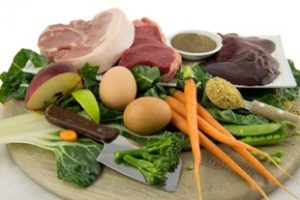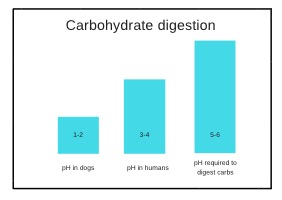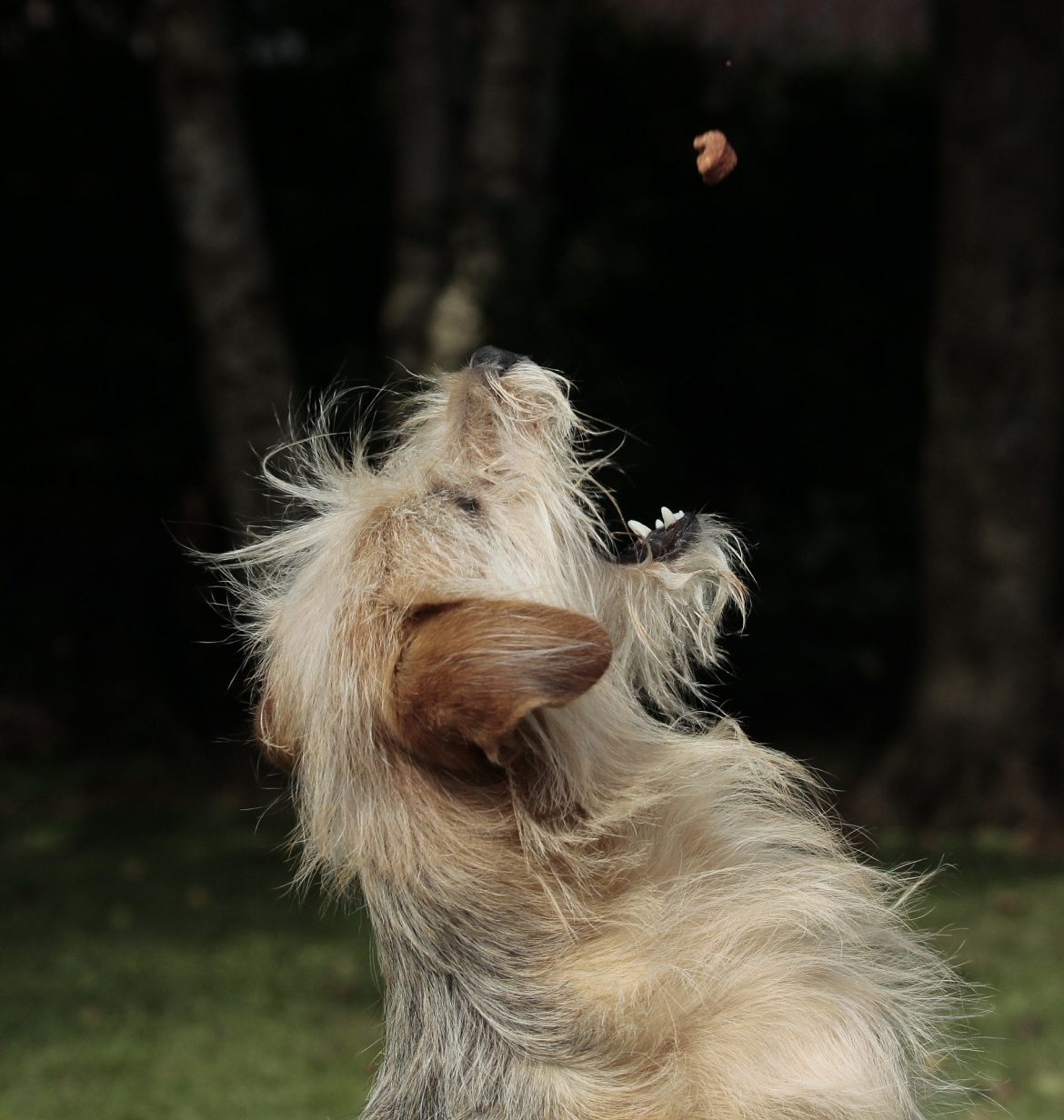In this article, Diana Scott from Frontier Pets explores doggy digestion problems – and what you can do to help. To learn more about Frontier Pets’ sustainable nutrition options, visit their website!
If your dog has runny poo, bad breath, and can clear a room in under 30 seconds with its emissions, then you could have a dog with digestion problems.
Digestion issues are becoming more and more common. They’re right up there with skin conditions like itching and hot-spots. These conditions make up a large percentage of the time you spend at the vet and were uncommon just a few decades ago.
To find out why this has changed, we need to look at how our dogs digest food.
How does dog digestion work?
A dog’s digestive system, whilst similar to that of humans, has some significant differences.
Dogs’ teeth are there for breaking up the food into smaller pieces – with not a lot of chewing. Quite often a dog will not chew at all, just swallow the food. The food then passes through to the dog’s very acid stomach after swallowing. This is where the main digestion occurs. A dog’s stomach is highly acidic with a pH of 1-2 (compared to a human range of 3-4).
Whilst we digest mainly in the intestines, much of digestion in dogs occurs in the stomach. That’s why they can swallow large pieces of meat and not have a problem!
The stomach has a layer of mucous which protects the stomach walls from the acid. A dog stomach is capable of greatly expanding to hold up to 5% of the dog’s own weight in food. The more food in the belly, the more they are able to digest. This enables them to feast when food is plentiful, such as after a successful hunt (back in the day).
After time in the stomach, the food moves out into the intestines. Here, it mixes with bile, bacteria, and various enzymes to break down. Tiny food particles are absorbed across the wall of the small intestine, and water through the wall of the large intestines. The left-over waste then emerges from the other end as faeces. If digestion is slow or poor, a lot of smelly gas arises – which needs to be expelled too!
What should a dog eat?
This is where things get super important. 
A dog is an omnivore (not a carnivore) so they eat meat, bones, offal, pre-ground vegetables (mimicking the stomachs of small prey), head, brains, eye balls, eggs, rotten fruit… the lot. It’s also important that the fruit & vegetables are finely ground up.
For most dogs, raw food is the healthiest option. Just like us, a dog will suffer from digestive issues if they eat heavily processed food. This means cans, kibble, and cooked rolls. No matter how high-quality the ingredients, these foods are not optimal for your dog’s health.
Most processed foods are cooked, and cooking destroys about 70% of any of the good nutrients in meat. This is, in short, another good reason should be avoided.
What dogs shouldn’t eat
This is equally important. Dogs are not meant to eat much in the way of carbohydrates. Their natural diets were mainly protein and fat, with few carbs and only a small amount of ground vegetable matter. While completely carb-free diets can pose hazards, dogs are just not set up to digest large amounts of carbs.
Most commercial foods contain high amounts of carbohydrates – up to 80% in some cases.
To digest carbs, a dog’s stomach needs a pH of 4-6. Without that amount, dogs can’t do anything with carbs other than gain weight, generate sloppy poo, and increased gases.
 In some extreme cases, the gas production can contribute to severe bloating which can be life-threatening. Feeding raw can be a pain in the butt, difficult to do, and very confusing. If you don’t have the time, or really know what a raw diet should contain, Frontier Pets has freeze-dried raw food options that you can serve in moments.
In some extreme cases, the gas production can contribute to severe bloating which can be life-threatening. Feeding raw can be a pain in the butt, difficult to do, and very confusing. If you don’t have the time, or really know what a raw diet should contain, Frontier Pets has freeze-dried raw food options that you can serve in moments.
What you will likely find is that after just a few weeks of feeding raw is that your dog’s poo will be firm and smaller in quantity. If they’ve got itchy, smelly skin then it’s likely to go away. If they fart – then these will likely go away too!


